
My passion for stretching informed my early development as an artist, from emulating the styles of the comic artists I was reading to creating dungeon maps, monsters, scenes and characters for Dungeons & Dragons and science fiction role-playing games as a teenager. I drew incessantly as a hobbyist then, and still do so to this day.
Thinking back about how and why I pursued a path in the arts, the passion to tell stories through drawing sits deep as a motivating, primal factor.
My comfort with drawing has given me the confidence to embrace oil painting (or colouring by numbers, as I jokingly call it) and extend my interest in storytelling into diverse and growing areas. If I can work out my intent for a new visual concept as a drawing, then I can surely paint it!
It’s for this reason I continue to exercise my drafting skills, forever pursuing areas of expression and challenges as a visual artist. I hope these 15 tips to improve your sketches will lead you into new territory with life drawing and other projects as we work our way through these dynamic times ahead.
These drawing tips can be applied to traditional methods using the best pencils for artists or on a computer, using the best digital art software and best drawing tablets.
01. Keep your pencils sharp
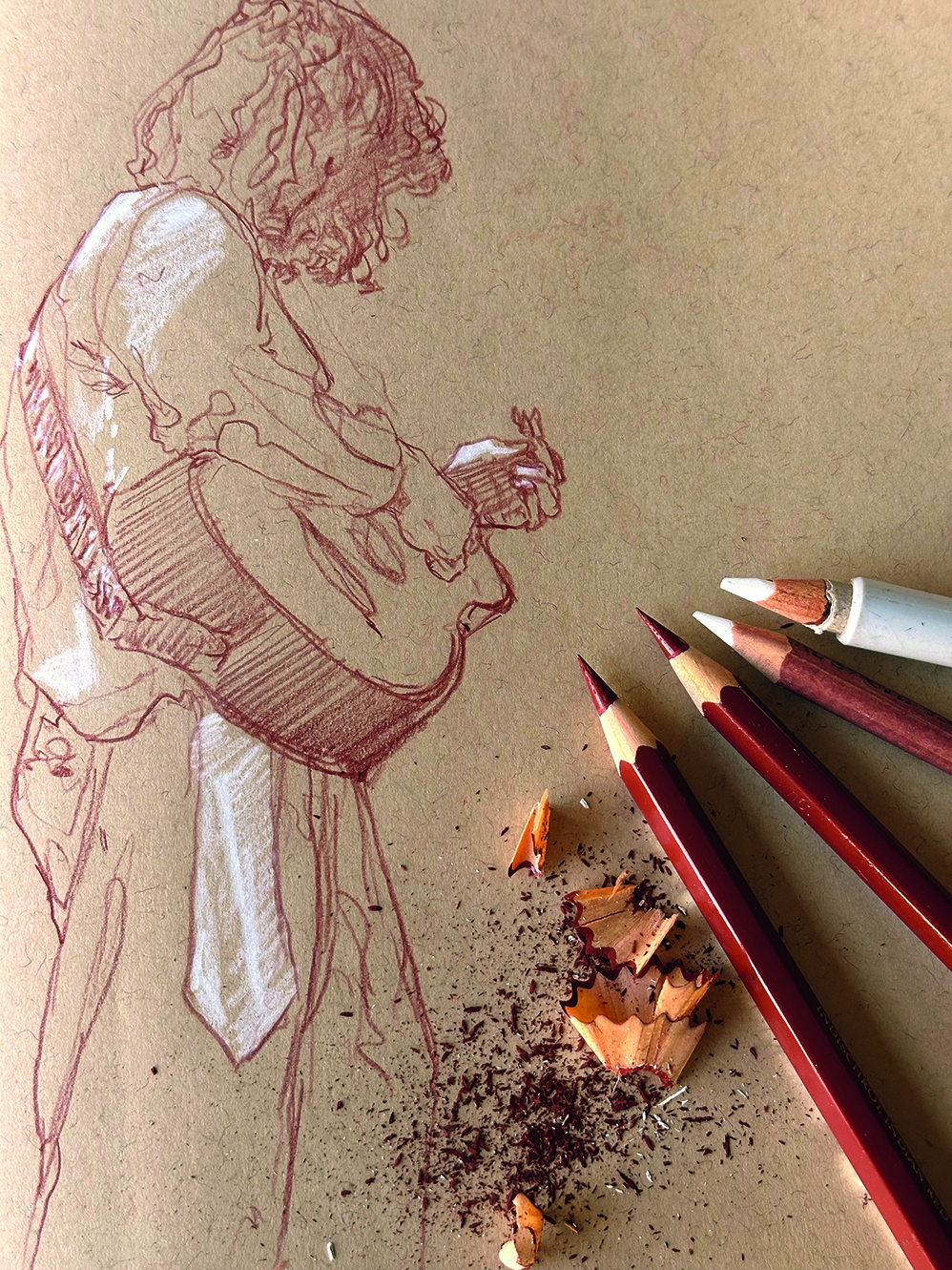
One of the greatest pieces of advice I received regarding life drawing was from the great draftsman and teacher Jerome Witkin: keep your drawing instruments sharp.
This quality to a pencil brings accurate and subtle mark making and control of gestural lines. After spending years looking at drawings from many of the great draftsmen of the past, I can concur this is what many of them indeed did!
02. Observe carefully
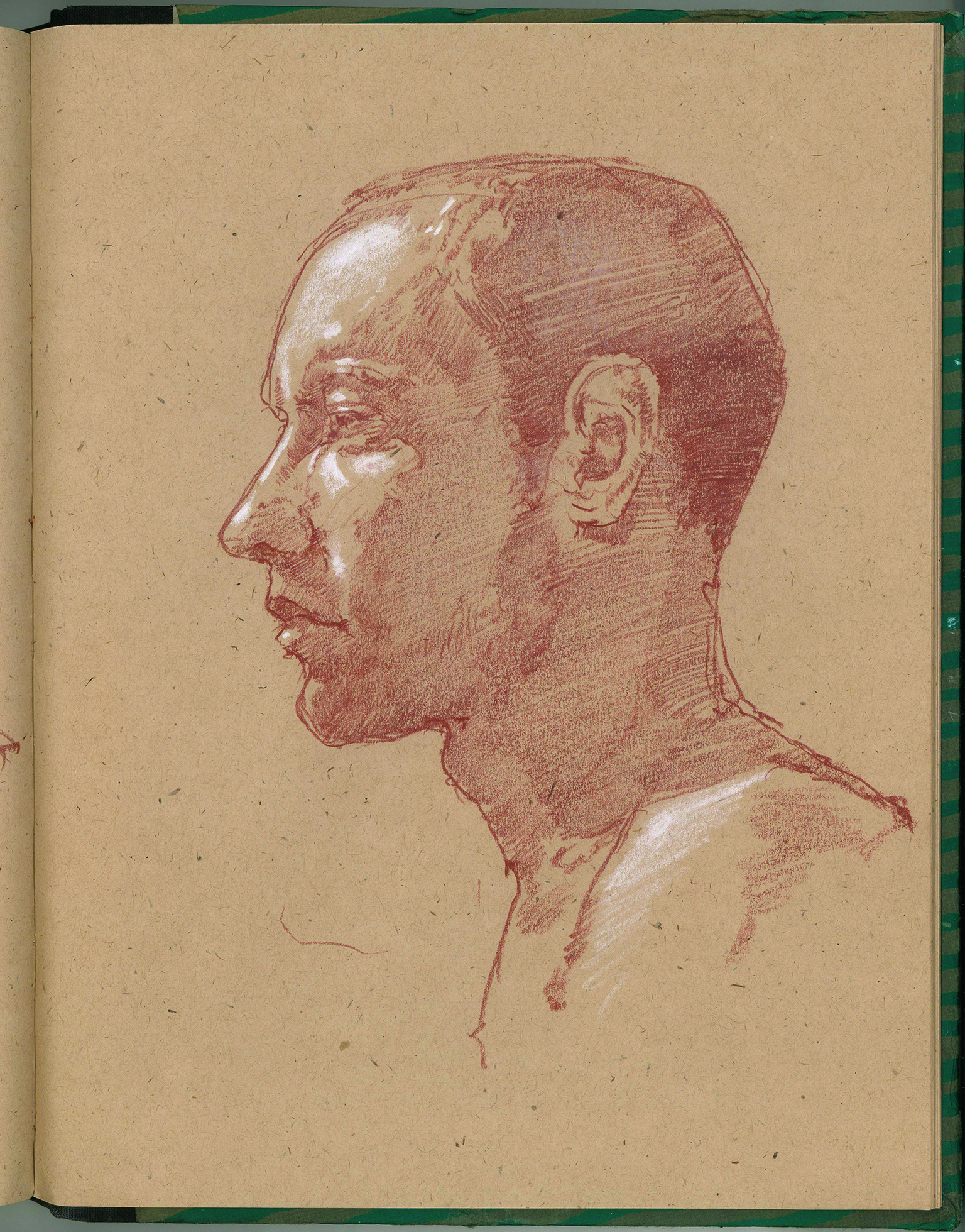
Jerome Witkin provided effective instruction on the use of keen observation of the forms I wished to draw before making my mark. Careful, introspective observation led me to create marks that better described that form, and capture the essence of the drawing to a higher degree of satisfaction. This led to greater confidence in my mark making and more precise gesture information when tackling those short poses.
03. Learn from the classics
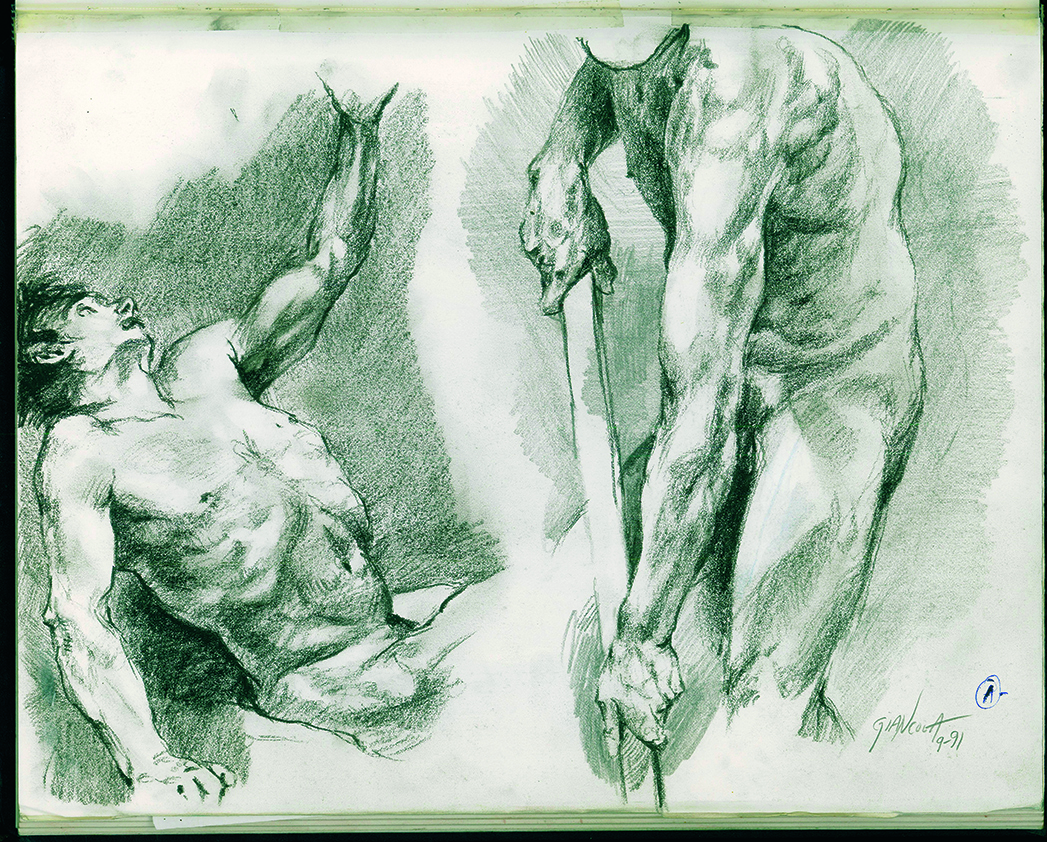
Yet another valuable lesson from Jerome Witkin came from creating copies of old masters’ drawings, emulating the drawing style and near exact mark making carried out by artists such as Boucher and Rubens, who are shown here.
By mimicking nearly all gestures – contour and shading included – I was able to better understand what kinds of information these artists were capturing.
The varied, selective shorthand used by each artist provided me with insights into what could work when creating my own gesture drawings.
04. Roll with it

I love life drawing for its forced engagement on variety, from the dynamic poses taken by the model to the unexpected lighting or vantage point you may find yourself in for a not-so-perfect session.
Embrace the difficulty and turn it into a positive exploration on an anatomical part or element you may not have focused on before, like capturing the feet and chair here.
Making interesting imagery means engaging fully with the little aspects of design and composition throughout an entire work of art.
05. Vary the focus areas in your artwork
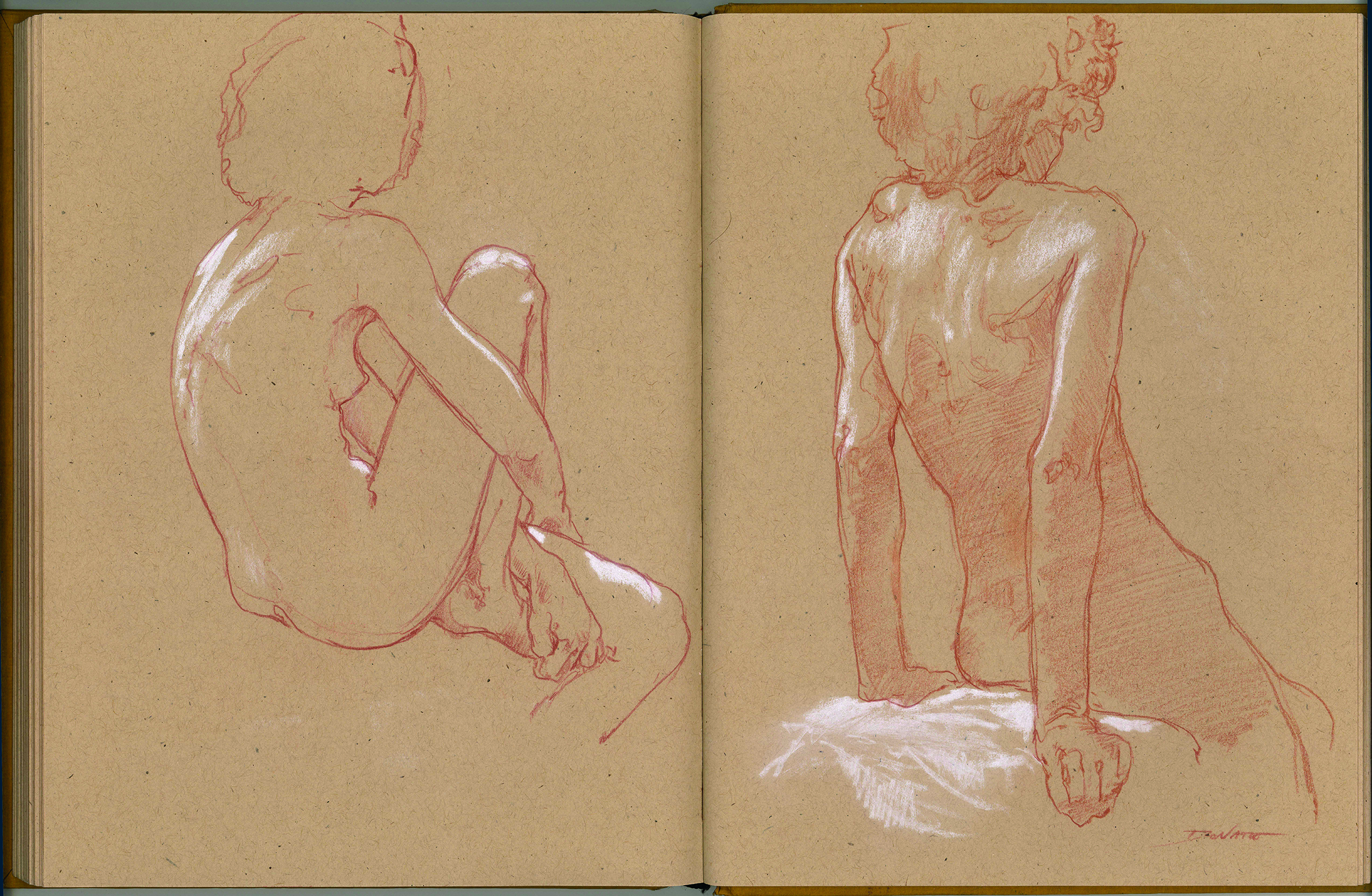
Following up on forced variation, I like to focus on an area or effect I might normally pass over due to time restrictions or lack of knowledge, like zooming in on a hand for a 10-minute session, or really tackling lighting around a bent knee.
These intimate observations help to build my visual memory and acuity, which can help to resolve drawing issues in my future projects.
06. From head to hands to toes
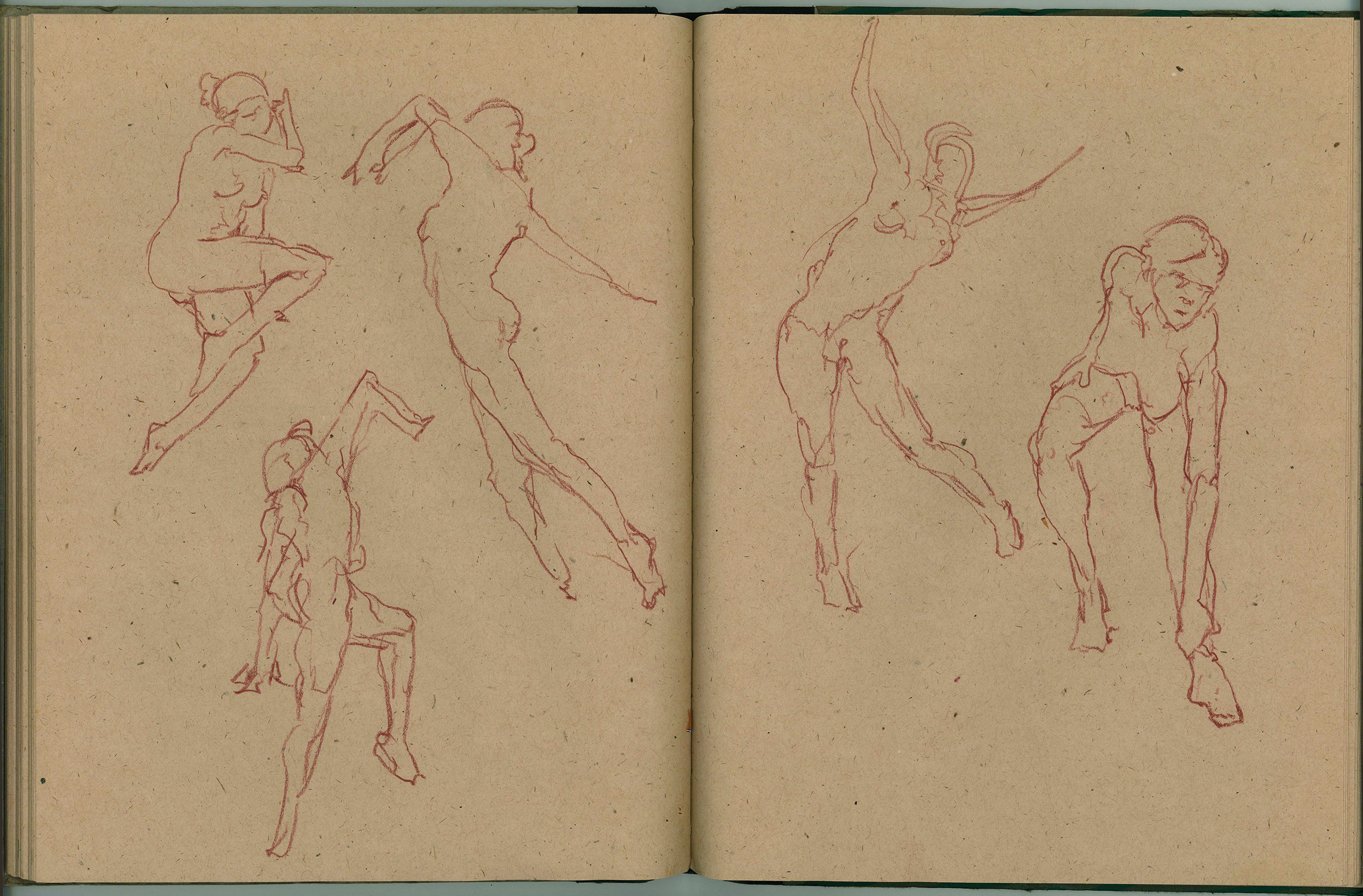
I always like to capture the entirety of the overall body gesture as an artistic challenge. Learning what works to record anchor marks that imply the outer limits of the model’s gesture is a great way for us to grow our technical skills. Not every drawing will come out perfect, but when it works, the drawings sing.
07. Toned paper
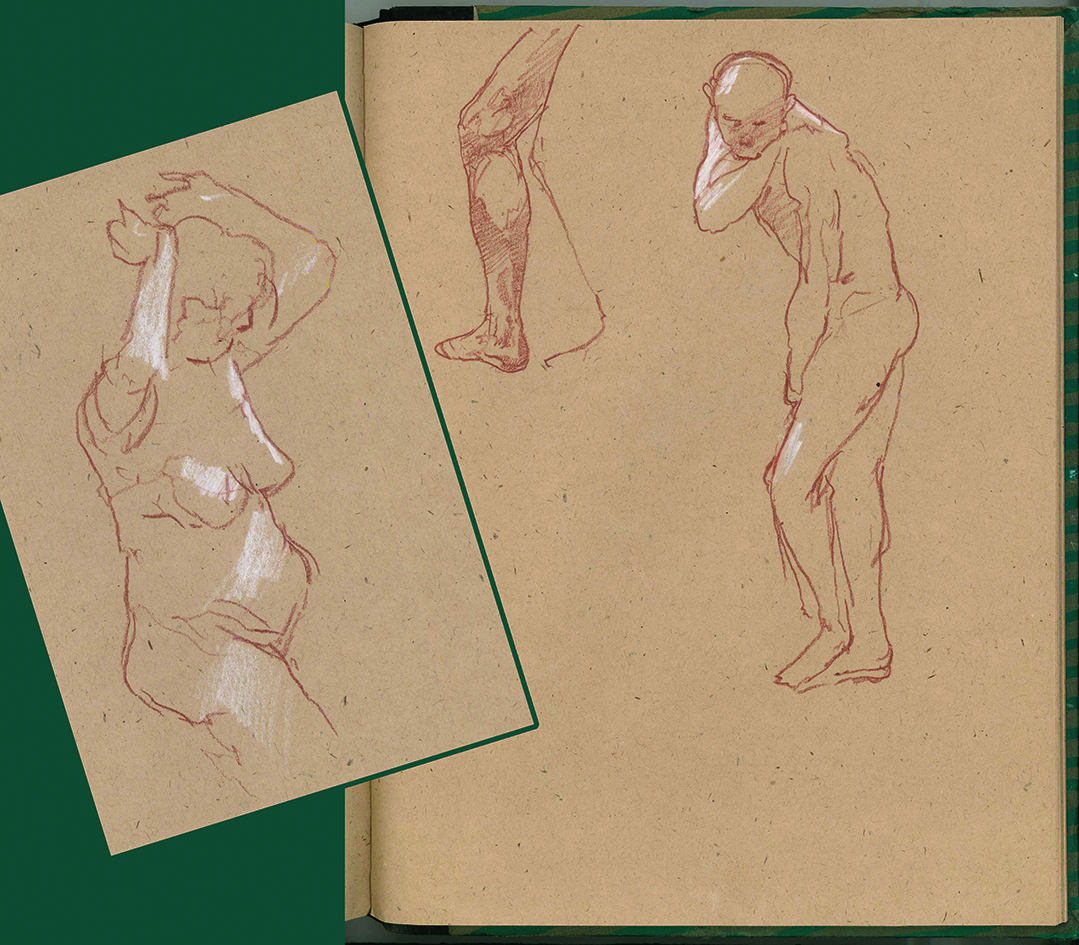
Back in 1998 I bought my first toned-paper sketchbook and have never gone back to white. The incredible thrill of hitting a two-minute drawing with a few white chalk marks to make it come to life volumetrically is a high like no other! (Read our guide to the best sketchbooks for artists.)
08. Negative spaces are shapes too
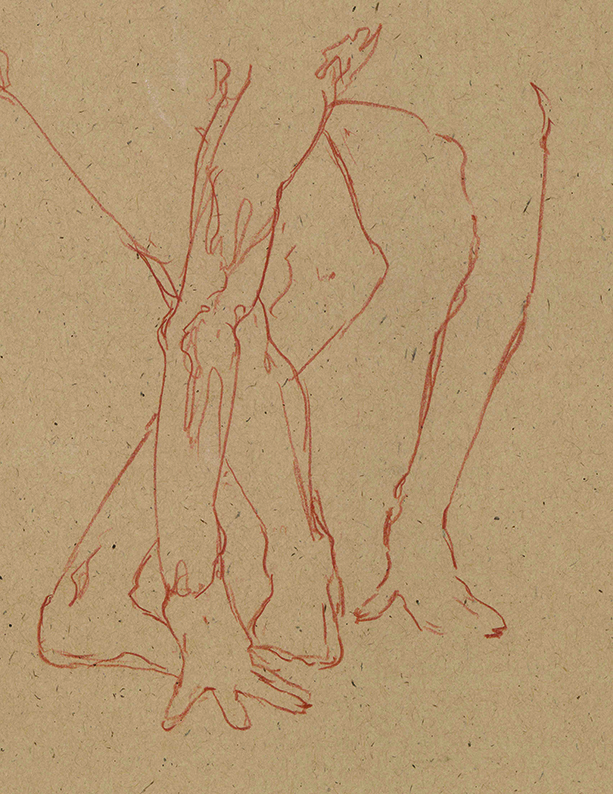
With only a handful of minutes available to capture information, I use every tool in my kit to do that effectively and quickly.
One of my favourites is to use negative space and shape drawing to describe how an arm or leg interacts with other body parts.
It’s a great way to see the world through a new lens, adds anatomical precision to the gestures, and it saves you time as well!
09. Create thumbnails
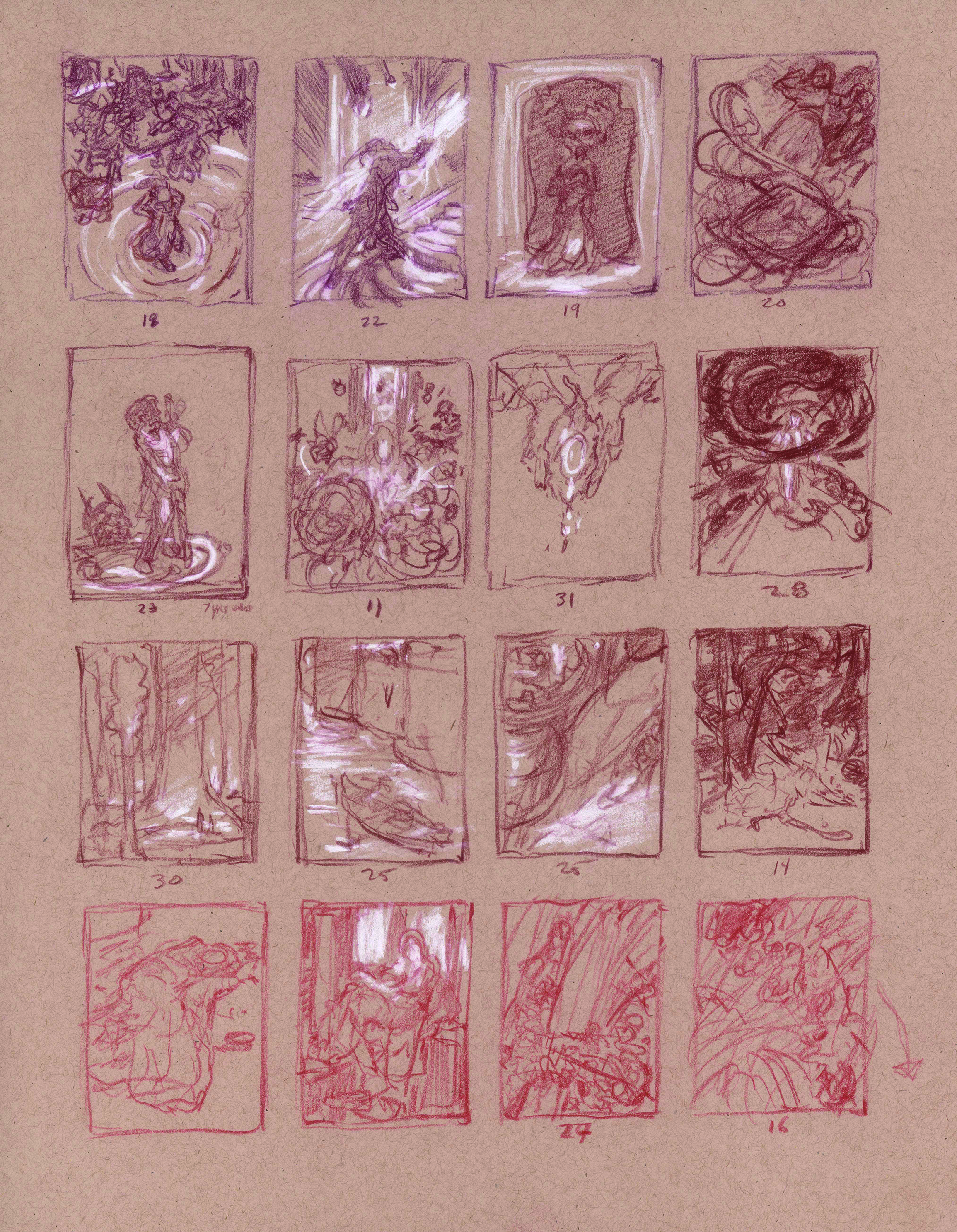
One of the most important steps in my visual development process is the use of abstract studies, better known as thumbnails.
I prefer to think of these explorations as weighted heavily in the realm of abstraction, combining vague awareness of narratives and imagination, and freeing up my visual ideation from preconceived ideas about figure, ground and details.
This also a visual language I’ve developed for a dialogue with myself. These aren’t intended to look good to an outside audience and are a way for me to visually think with greater, uninhibited freedom of expression.
Step-by-step: Tyrion and Shae – The Hand of the King
10A From tangent to tangent
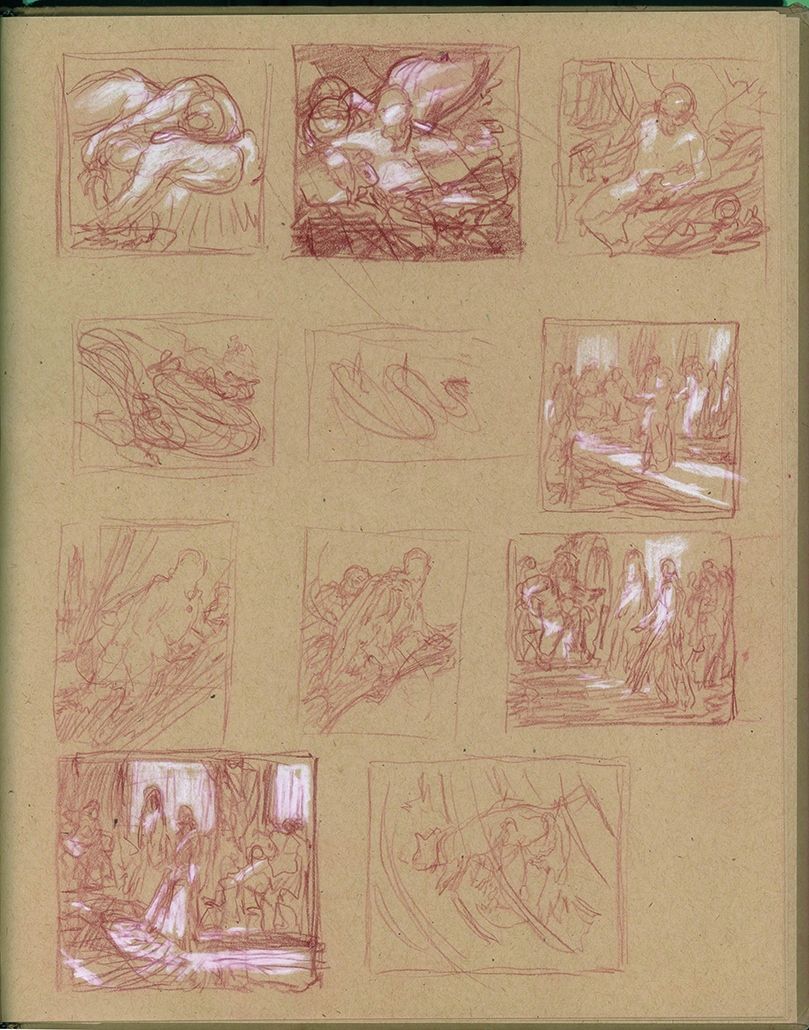
The lack of precise, laboured details within these abstracts allows me to quickly jump and move into new visual solutions as my thoughts evolve or become inspired.
You could equate this with free-form writing where you’re trying to tap into expressive thoughts – without worrying about grammar, spelling, punctuation and so on – and capture a hint of meaning before the next thought steps into your field of awareness and takes your attention somewhere else.
10B Roughing it out
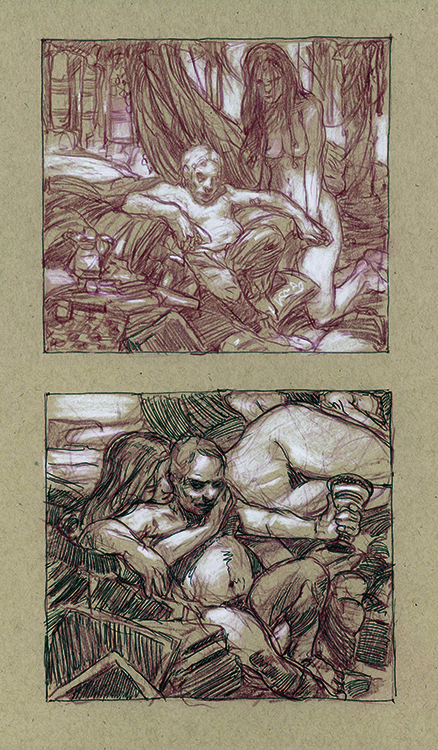
As a professional artist collaborating with art and design directors, I need to effectively communicate my intentions when working on projects. The small abstracts are far too vague and in a ‘language’ that doesn’t open up this dialogue.
So on most of my commercial projects, I step up the details and structure in a second pass, offering greater clarity for my clients on how I’ll approach visually solving their project. The first abstract is always the foundation here.
10C Final preliminary drawing
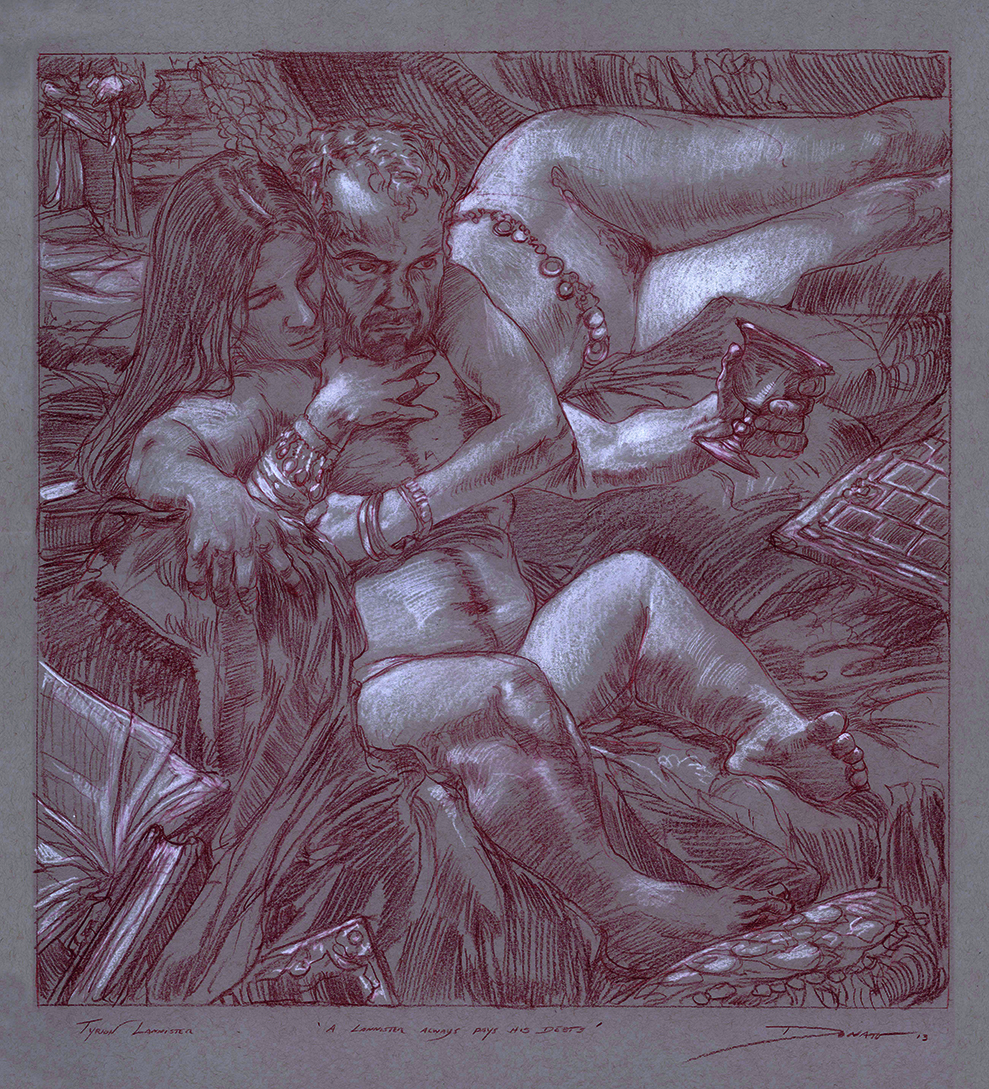
For oil-painted projects, I almost always create a full-sized preliminary drawing of figures and objects as my final step before going to colour.
This drawing uses the abstracts and large rough as guides to combine photo references and models, and resolve complex draftsmanship and design issues around compositional choices, architectural renderings and the like.
Unifying compositional themes are explored and pushed here as I harmonise the individual parts.
11. Drawing for fun
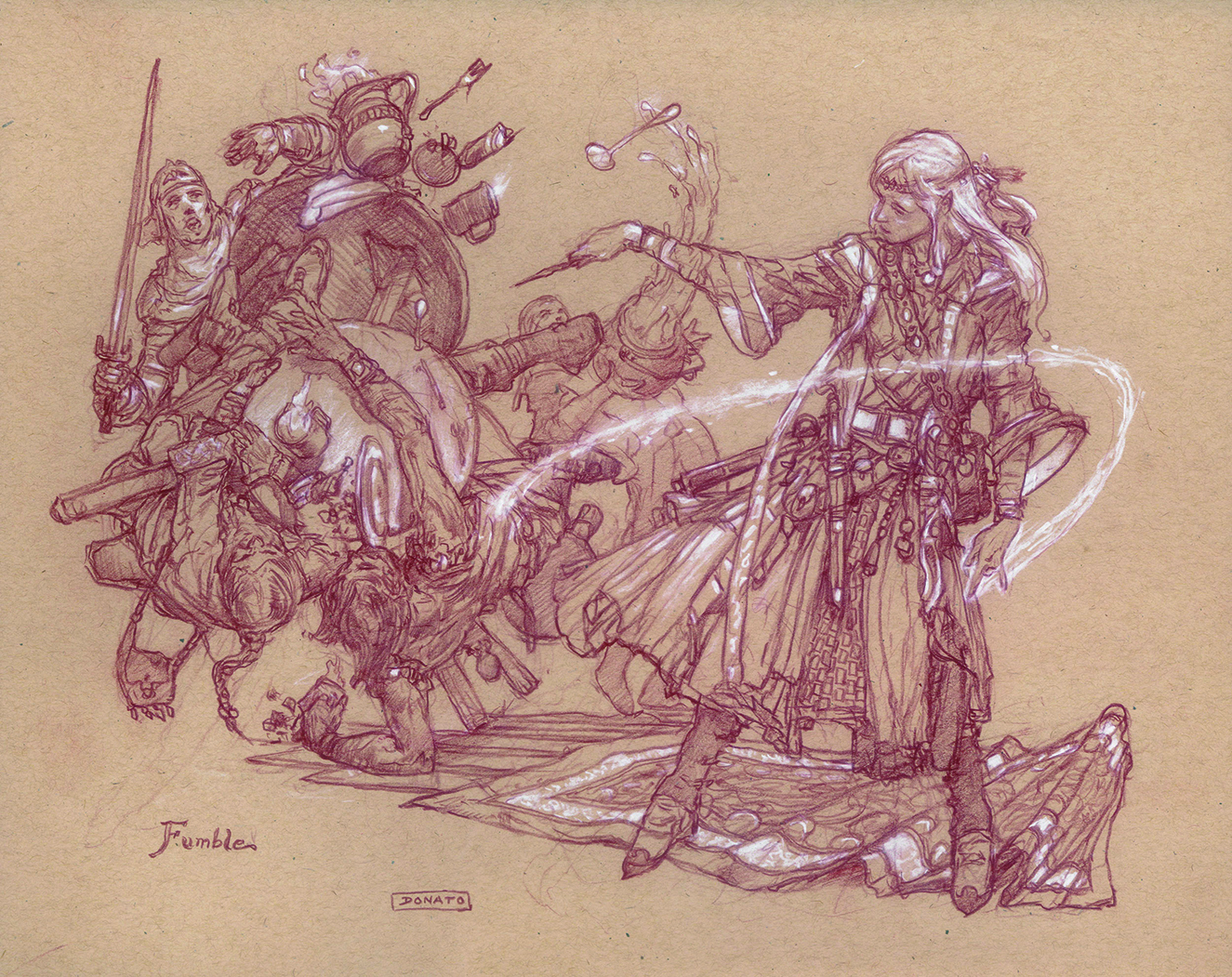
A major change for me came in 2002, when I began to create drawings for the sheer pleasure of it. Sure, I’d created drawings for my professional commissions and did hundreds of studies at life sessions over the years, but rarely as a professional had I ever taken the time to just enjoy the exploration of pushing around pencil and chalk as the final end point to the process.
Previously, I’d always thought about what the final image would need in terms of colour, detailed lighting, atmosphere, figurative references and background complexities.
Instead I simply began to create drawings for myself, and stopped worrying about final colour solutions and weeks upon weeks of laboured rendering for a concept to be complete. It was liberating to just draw!
12. Stay diversified
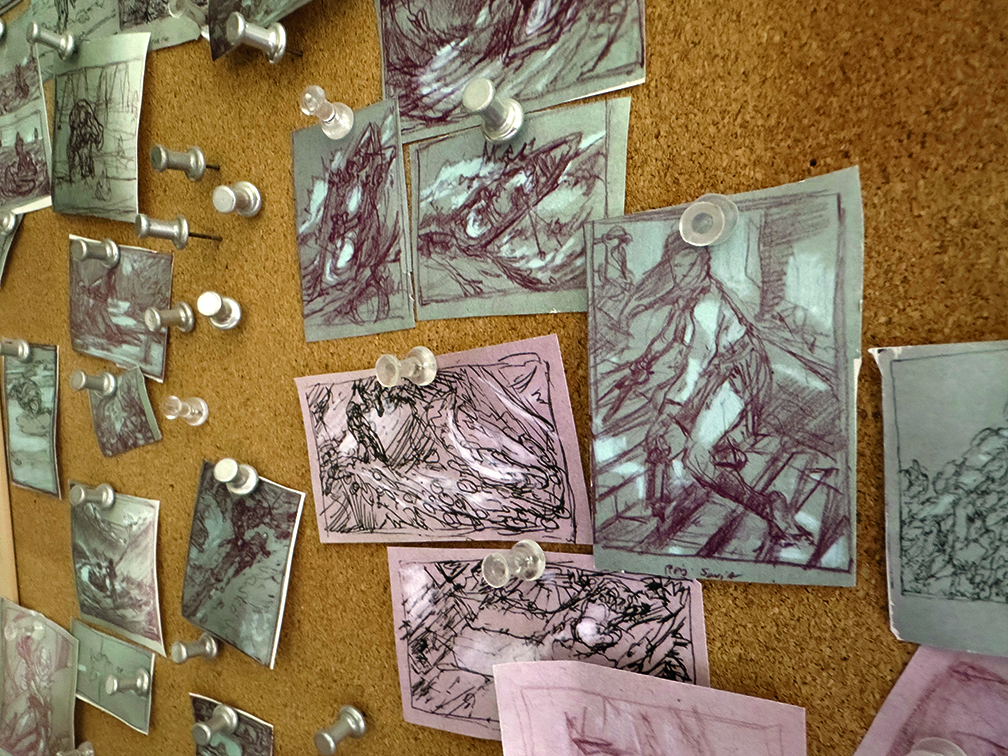
With all my varied projects and commissions, there are many more great concepts that I don’t have time to create. I keep a wall of some favourite abstracts pinned near me in case a future project could be married to one of those past ideas.
13. Draw without fear
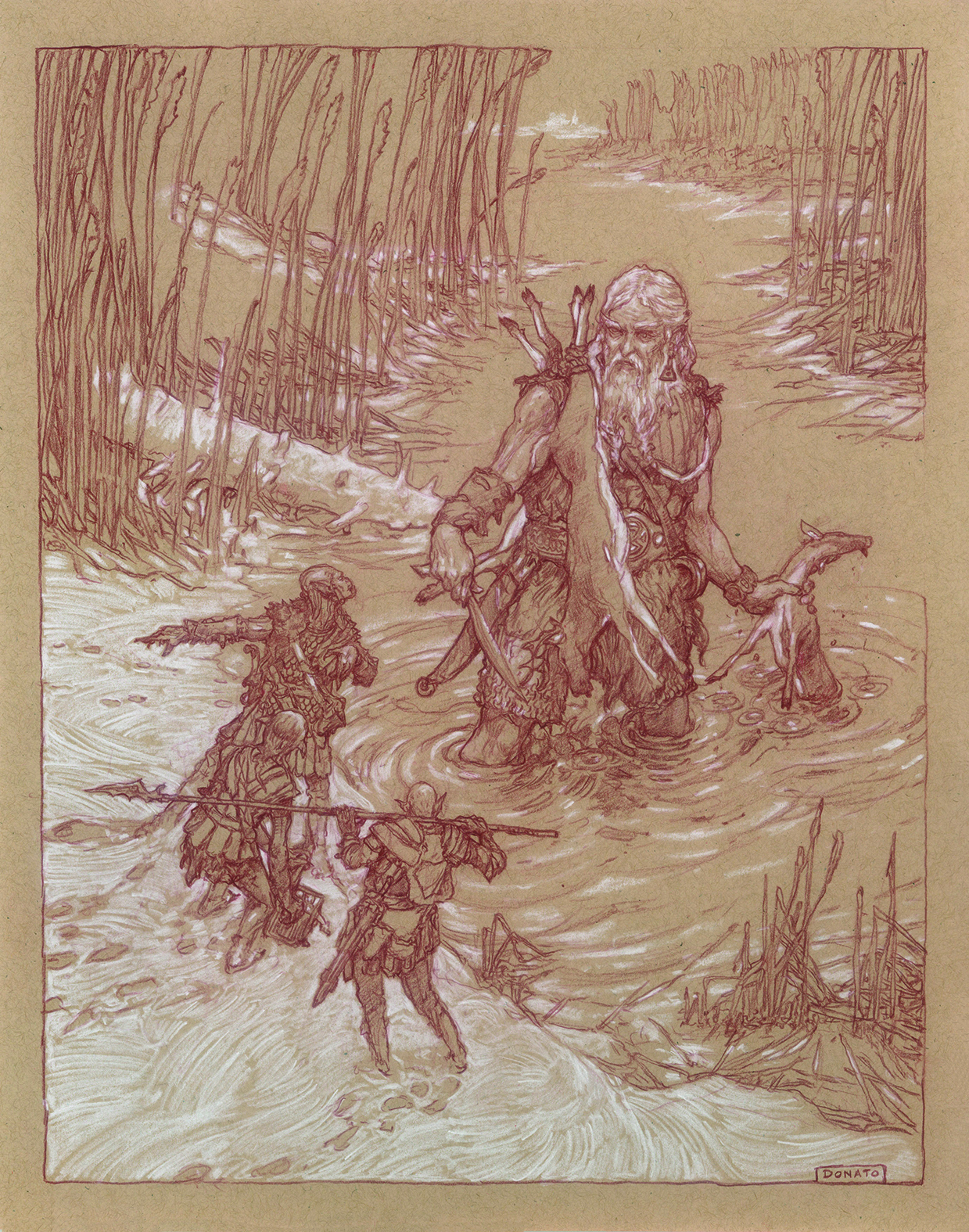
I find that one of the best attributes for drawing out narratives, rather than laboured renderings as paintings, is that deficiencies can be masked and diminished by other rendering and design aspects of a drawing.
I don’t have to know exactly what something looks like; I can suggest it. This has helped make me fearless when tackling new content for stories.
A cityscape with a rookery and dozens of birds? No problem! A giant standing in a swamp talking to orcs while hunting in winter? Sure! A wizard casting a spell in a tavern? I’ve gotcha! There’s almost nothing I won’t try as a drawing.
14. Inspiring new projects
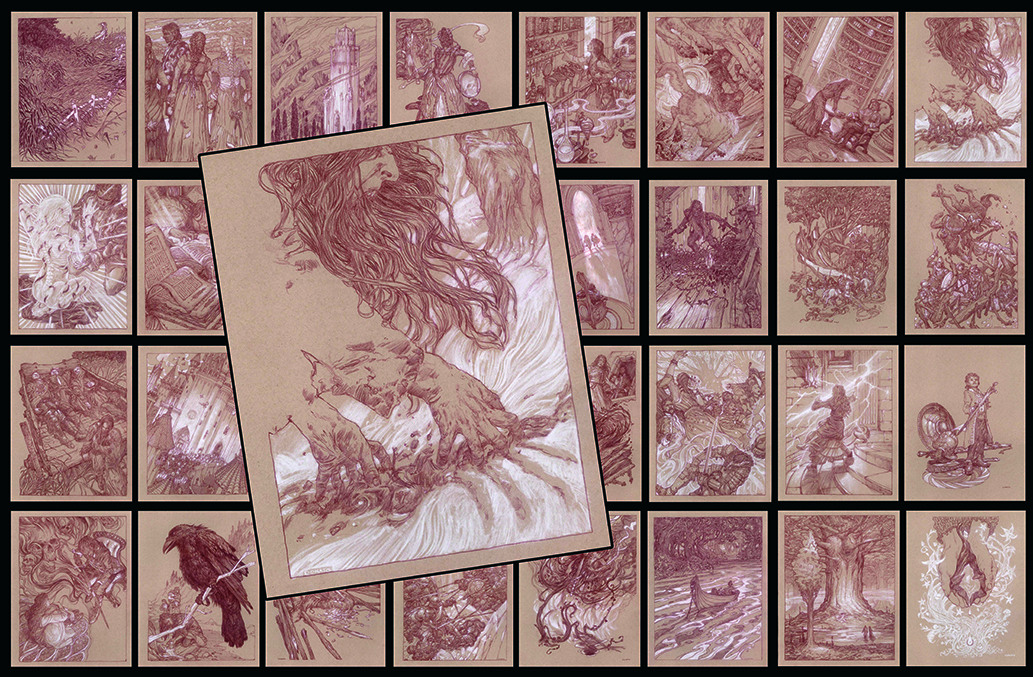
A great spin off from all that fun drawing was that art directors discovered all those images and are now commissioning final projects that are actually based upon my new style.
These images, for example are a set from Naomi Novik’s brilliant novel Uprooted, a limited edition release published by Grim Oak Press.
15. Be a prolific creator
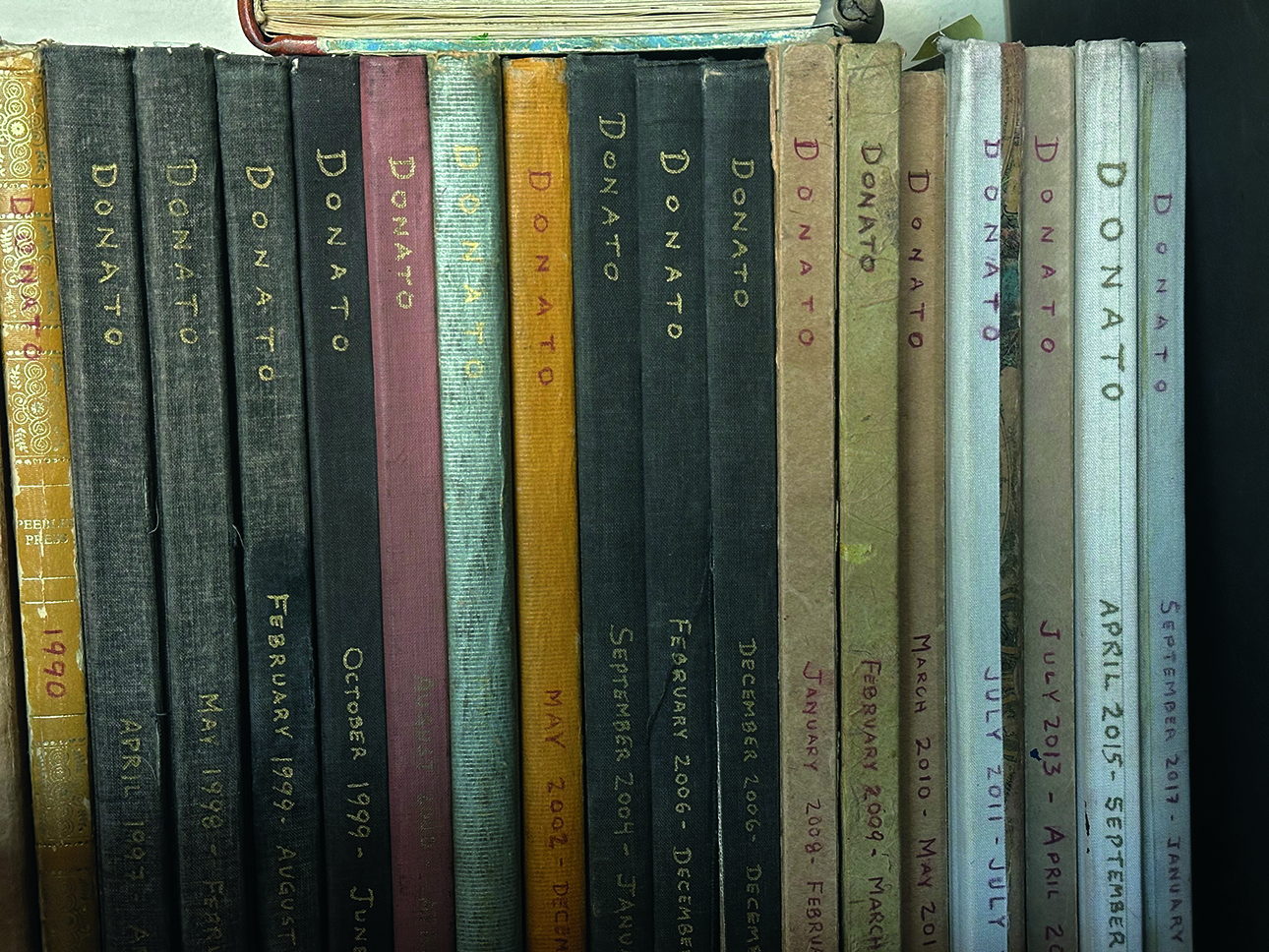
Draw. Draw. Draw. There’s so much that comes from doing: seeing the human body in new, atypical ways, hand-eye coordination, experimental choices in mark making, confidence building, and one many people don’t think about: materials familiarity.
When I reached the stage of not having to think about my tools – becoming ultra familiar with their capabilities and limitations – my drawings became so much more expressive.
Get more tutorials in ImagineFX
This content originally appeared in ImagineFX magazine, the world's leading digital art and fantasy art magazine. ImagineFX is on sale in the UK, Europe, United States, Canada, Australia and more. Limited numbers of ImagineFX print editions are available for delivery from our online store (the shipping costs are included in all prices).







